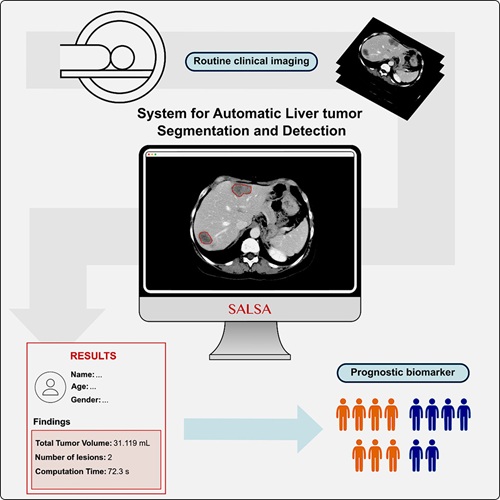High-Dose-Rate Brachytherapy Treatment Planning Software Receives FDA Clearance
|
By MedImaging International staff writers Posted on 11 Feb 2013 |
A new application enables clinicians to plan and perform high-dose-rate (HDR) brachytherapy treatments for prostate cancer using real-time ultrasound guidance.
Varian Medical Systems (Palo Alto, CA, USA) has received a US Food and Drug Administration (FDA) 510(k) clearance for the latest version of its Vitesse real-time planning for HDR brachytherapy, which is used to plan and perform high-dose-rate (HDR), ultrasound-guided brachytherapy treatments for prostate cancer.
“This version of Vitesse reduces the number and complexity of steps involved in planning and completing a treatment. It eliminates the need for a data transfer to another software program, and avoids moving the patient to a CT [computed tomography] scanner for images in the middle of the procedure. For these reasons, most clinicians will see a reduction in the amount of time needed to complete these treatments, often by as much as an hour and a half,” said Tim Clark, marketing manager for Varian brachytherapy.
HDR brachytherapy involves delivering radiotherapy from inside the body by temporarily placing a tiny radioactive source directly into the tumor or other targeted area. Using a robotic device called an afterloader, clinicians place the radioactive source into positions through needles that have been inserted into the area being treated. The source is then moved within the needles under computer control to create the specified dose distribution within the patient’s anatomy.
Using the latest version of Vitesse, HDR brachytherapy treatment plans can be created in a real-time environment, using ultrasound images generated in the operating room rather than CT scans generated elsewhere. This avoids the need to move the patient to a CT scanner room for imaging after the needles have been put in place. The process can now be completed entirely within the Vitesse program, from capturing the ultrasound image to finalizing an approved treatment plan.
In addition to receiving FDA 510(k) clearance, which permits sale of the Vitesse software in the United States, Varian has also obtained the CE Marking, which permits sales in the European Union and other countries where the marking is recognized.
Related Links:
Varian Medical Systems
Varian Medical Systems (Palo Alto, CA, USA) has received a US Food and Drug Administration (FDA) 510(k) clearance for the latest version of its Vitesse real-time planning for HDR brachytherapy, which is used to plan and perform high-dose-rate (HDR), ultrasound-guided brachytherapy treatments for prostate cancer.
“This version of Vitesse reduces the number and complexity of steps involved in planning and completing a treatment. It eliminates the need for a data transfer to another software program, and avoids moving the patient to a CT [computed tomography] scanner for images in the middle of the procedure. For these reasons, most clinicians will see a reduction in the amount of time needed to complete these treatments, often by as much as an hour and a half,” said Tim Clark, marketing manager for Varian brachytherapy.
HDR brachytherapy involves delivering radiotherapy from inside the body by temporarily placing a tiny radioactive source directly into the tumor or other targeted area. Using a robotic device called an afterloader, clinicians place the radioactive source into positions through needles that have been inserted into the area being treated. The source is then moved within the needles under computer control to create the specified dose distribution within the patient’s anatomy.
Using the latest version of Vitesse, HDR brachytherapy treatment plans can be created in a real-time environment, using ultrasound images generated in the operating room rather than CT scans generated elsewhere. This avoids the need to move the patient to a CT scanner room for imaging after the needles have been put in place. The process can now be completed entirely within the Vitesse program, from capturing the ultrasound image to finalizing an approved treatment plan.
In addition to receiving FDA 510(k) clearance, which permits sale of the Vitesse software in the United States, Varian has also obtained the CE Marking, which permits sales in the European Union and other countries where the marking is recognized.
Related Links:
Varian Medical Systems
Latest Imaging IT News
- New Google Cloud Medical Imaging Suite Makes Imaging Healthcare Data More Accessible
- Global AI in Medical Diagnostics Market to Be Driven by Demand for Image Recognition in Radiology
- AI-Based Mammography Triage Software Helps Dramatically Improve Interpretation Process
- Artificial Intelligence (AI) Program Accurately Predicts Lung Cancer Risk from CT Images
- Image Management Platform Streamlines Treatment Plans
- AI-Based Technology for Ultrasound Image Analysis Receives FDA Approval
- AI Technology for Detecting Breast Cancer Receives CE Mark Approval
- Digital Pathology Software Improves Workflow Efficiency
- Patient-Centric Portal Facilitates Direct Imaging Access
- New Workstation Supports Customer-Driven Imaging Workflow
Channels
Radiography
view channel
AI Radiology Tool Identifies Life-Threatening Conditions in Milliseconds
Radiology is emerging as one of healthcare’s most pressing bottlenecks. By 2033, the U.S. could face a shortage of up to 42,000 radiologists, even as imaging volumes grow by 5% annually.... Read more
Machine Learning Algorithm Identifies Cardiovascular Risk from Routine Bone Density Scans
A new study published in the Journal of Bone and Mineral Research reveals that an automated machine learning program can predict the risk of cardiovascular events and falls or fractures by analyzing bone... Read more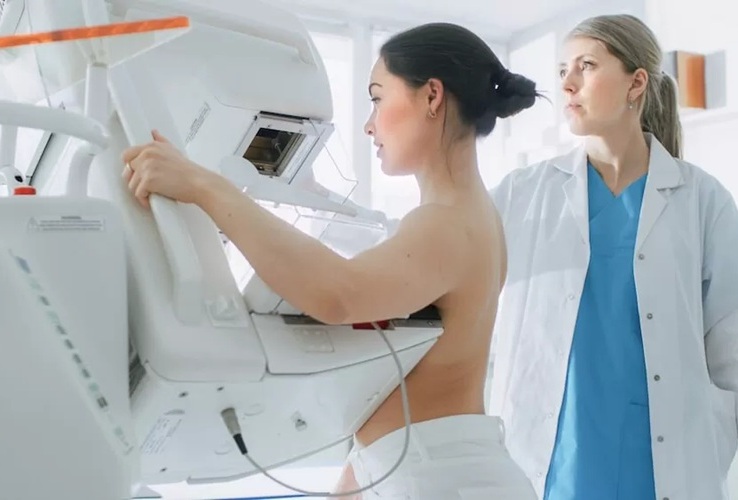
AI Improves Early Detection of Interval Breast Cancers
Interval breast cancers, which occur between routine screenings, are easier to treat when detected earlier. Early detection can reduce the need for aggressive treatments and improve the chances of better outcomes.... Read more
World's Largest Class Single Crystal Diamond Radiation Detector Opens New Possibilities for Diagnostic Imaging
Diamonds possess ideal physical properties for radiation detection, such as exceptional thermal and chemical stability along with a quick response time. Made of carbon with an atomic number of six, diamonds... Read moreMRI
view channel
New MRI Technique Reveals Hidden Heart Issues
Traditional exercise stress tests conducted within an MRI machine require patients to lie flat, a position that artificially improves heart function by increasing stroke volume due to gravity-driven blood... Read more
Shorter MRI Exam Effectively Detects Cancer in Dense Breasts
Women with extremely dense breasts face a higher risk of missed breast cancer diagnoses, as dense glandular and fibrous tissue can obscure tumors on mammograms. While breast MRI is recommended for supplemental... Read moreUltrasound
view channel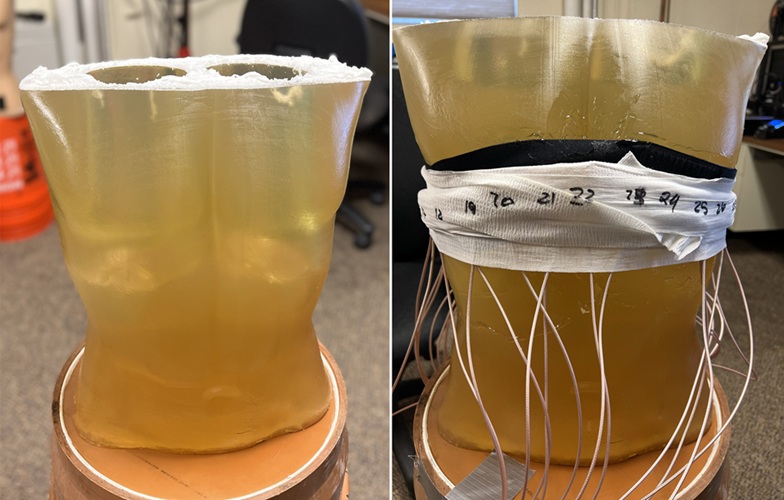
New Medical Ultrasound Imaging Technique Enables ICU Bedside Monitoring
Ultrasound computed tomography (USCT) presents a safer alternative to imaging techniques like X-ray computed tomography (commonly known as CT or “CAT” scans) because it does not produce ionizing radiation.... Read more
New Incision-Free Technique Halts Growth of Debilitating Brain Lesions
Cerebral cavernous malformations (CCMs), also known as cavernomas, are abnormal clusters of blood vessels that can grow in the brain, spinal cord, or other parts of the body. While most cases remain asymptomatic,... Read moreNuclear Medicine
view channel
New Imaging Approach Could Reduce Need for Biopsies to Monitor Prostate Cancer
Prostate cancer is the second leading cause of cancer-related death among men in the United States. However, the majority of older men diagnosed with prostate cancer have slow-growing, low-risk forms of... Read more
Novel Radiolabeled Antibody Improves Diagnosis and Treatment of Solid Tumors
Interleukin-13 receptor α-2 (IL13Rα2) is a cell surface receptor commonly found in solid tumors such as glioblastoma, melanoma, and breast cancer. It is minimally expressed in normal tissues, making it... Read moreGeneral/Advanced Imaging
view channel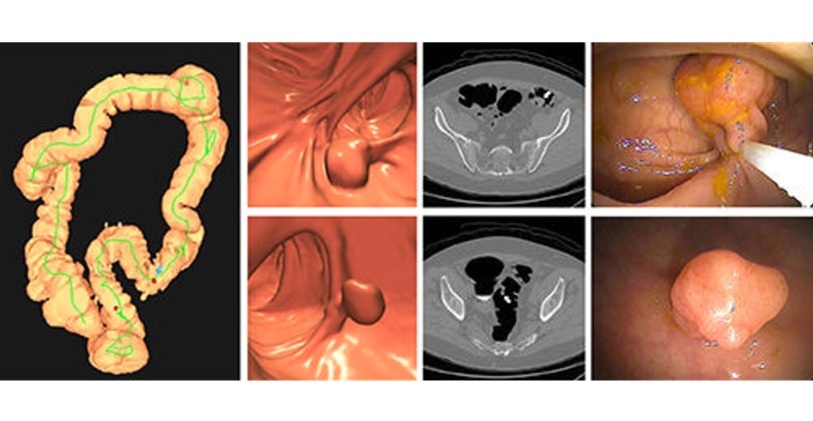
CT Colonography Beats Stool DNA Testing for Colon Cancer Screening
As colorectal cancer remains the second leading cause of cancer-related deaths worldwide, early detection through screening is vital to reduce advanced-stage treatments and associated costs.... Read more
First-Of-Its-Kind Wearable Device Offers Revolutionary Alternative to CT Scans
Currently, patients with conditions such as heart failure, pneumonia, or respiratory distress often require multiple imaging procedures that are intermittent, disruptive, and involve high levels of radiation.... Read more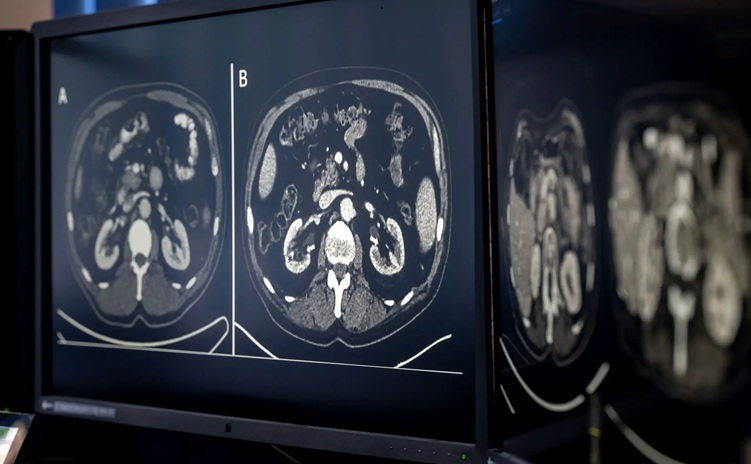
AI-Based CT Scan Analysis Predicts Early-Stage Kidney Damage Due to Cancer Treatments
Radioligand therapy, a form of targeted nuclear medicine, has recently gained attention for its potential in treating specific types of tumors. However, one of the potential side effects of this therapy... Read moreIndustry News
view channel
GE HealthCare and NVIDIA Collaboration to Reimagine Diagnostic Imaging
GE HealthCare (Chicago, IL, USA) has entered into a collaboration with NVIDIA (Santa Clara, CA, USA), expanding the existing relationship between the two companies to focus on pioneering innovation in... Read more
Patient-Specific 3D-Printed Phantoms Transform CT Imaging
New research has highlighted how anatomically precise, patient-specific 3D-printed phantoms are proving to be scalable, cost-effective, and efficient tools in the development of new CT scan algorithms... Read more
Siemens and Sectra Collaborate on Enhancing Radiology Workflows
Siemens Healthineers (Forchheim, Germany) and Sectra (Linköping, Sweden) have entered into a collaboration aimed at enhancing radiologists' diagnostic capabilities and, in turn, improving patient care... Read more














.jpeg)



